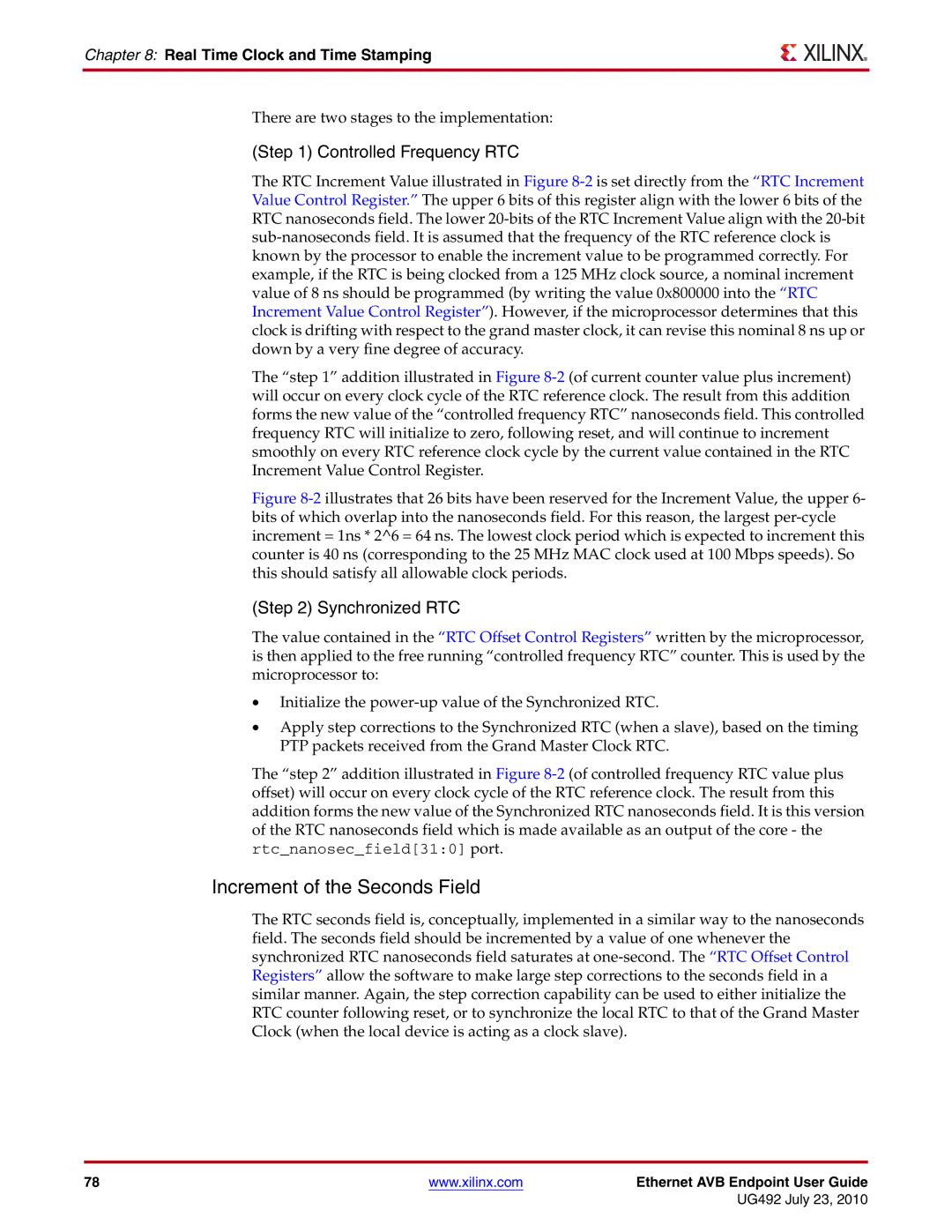
Chapter 8: Real Time Clock and Time Stamping
There are two stages to the implementation:
(Step 1) Controlled Frequency RTC
The RTC Increment Value illustrated in Figure
The “step 1” addition illustrated in Figure
Figure 8-2 illustrates that 26 bits have been reserved for the Increment Value, the upper 6- bits of which overlap into the nanoseconds field. For this reason, the largest per-cycle increment = 1ns * 2^6 = 64 ns. The lowest clock period which is expected to increment this counter is 40 ns (corresponding to the 25 MHz MAC clock used at 100 Mbps speeds). So this should satisfy all allowable clock periods.
(Step 2) Synchronized RTC
The value contained in the “RTC Offset Control Registers” written by the microprocessor, is then applied to the free running “controlled frequency RTC” counter. This is used by the microprocessor to:
•Initialize the
•Apply step corrections to the Synchronized RTC (when a slave), based on the timing PTP packets received from the Grand Master Clock RTC.
The “step 2” addition illustrated in Figure
Increment of the Seconds Field
The RTC seconds field is, conceptually, implemented in a similar way to the nanoseconds field. The seconds field should be incremented by a value of one whenever the synchronized RTC nanoseconds field saturates at
78 | www.xilinx.com | Ethernet AVB Endpoint User Guide |
|
| UG492 July 23, 2010 |
